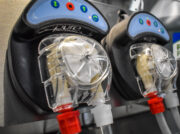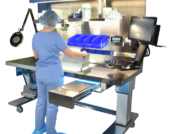
TAG: Pure Processing Education Blog

Jun 14, 2021
3 Reasons to Flush Medical Instruments Before Using an Ultrasonic Cleaner
One of the most important phases of medical device reprocessing is the manual cleaning. Improperly cleaned surgical instruments are much more likely to contribute to healthcare-associated infections (HAIs) if bioburden is not completely removed prior to the sterilization process. There are many options for cleaning such devices, including ultrasonic cleaners. But can ultrasonics perform an…
Read More






